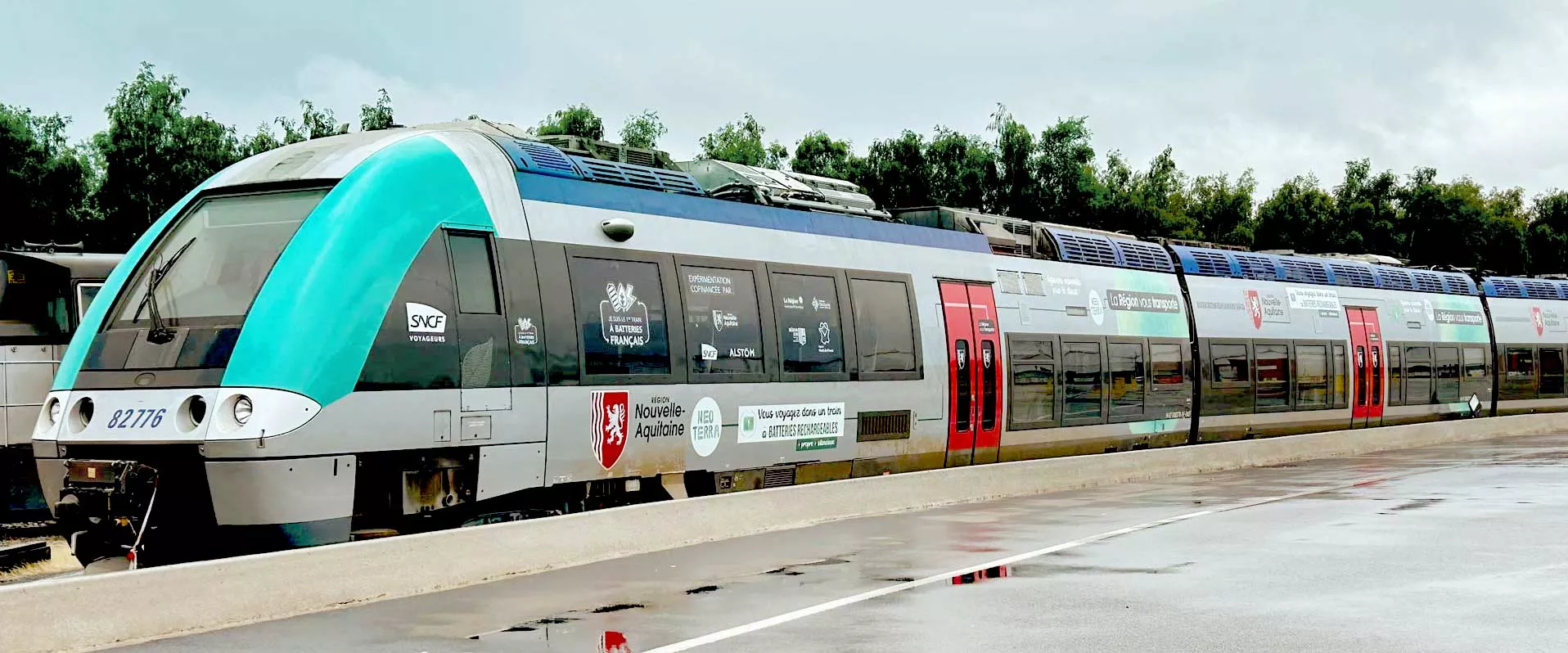
Decarbonization and the green transition
Rail is already the greenest form of transport on the market, but at SNCF we’re going further. To reach our goal of zero direct carbon emissions by 2050, we’re trialling innovative new propulsion methods with partners in industry and France’s regional governments. Learn more.
More TERs, less CO₂
Rail is already eco-friendly, accounting for only 0.4% of the transport industry’s greenhouse gas emissions. When travellers choose rail, they’re choosing to protect the planet—and soon that will be even more true of our TER regional express trains.
In partnership with the French regional governments that manage TER service, our Tech4Rail1 and PlaneTER programmes are developing diesel alternatives that can meet the needs of every community. Today, fossil fuels still account for 61% of TER2 CO2 emissions, but we want to eliminate them completely by 2035.

2035
is our deadline for eliminating diesel completely
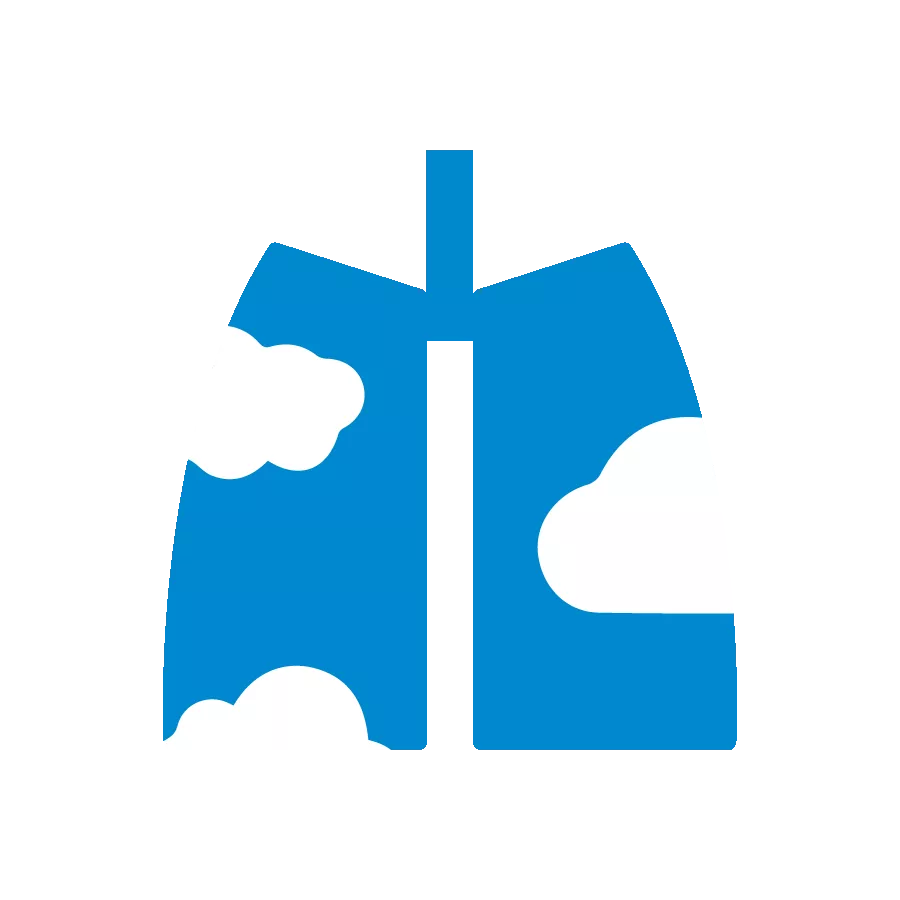
Zero
direct carbon emissions by 2050

0.4%
Rail generates only 0.4% of greenhouse gas emissions from transport
The energy transition and zero direct carbon emissions are an imperative—but they’re also an opportunity to expand market share for rail and other sustainable mobilities.
Former CEO of SNCF group
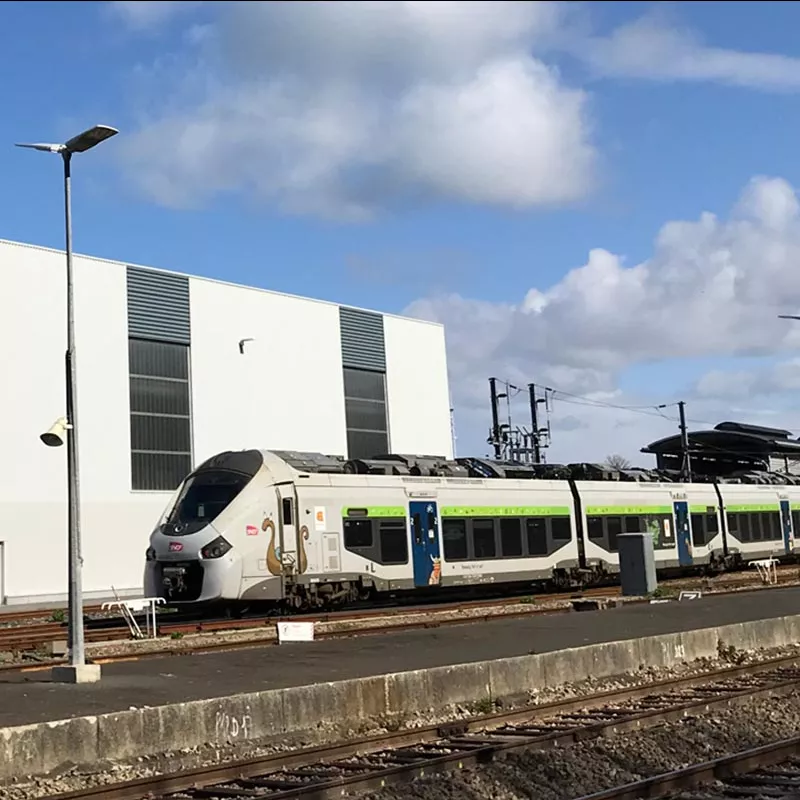
Biofuel TERs
In partnership with the Normandy region, we tested 15 rapeseed-powered Régiolis trainsets on the Paris–Granville line. In 18 months, they covered nearly 4 million km, saving 12,000 tonnes of CO2 and 6.5 million litres of diesel fuel.
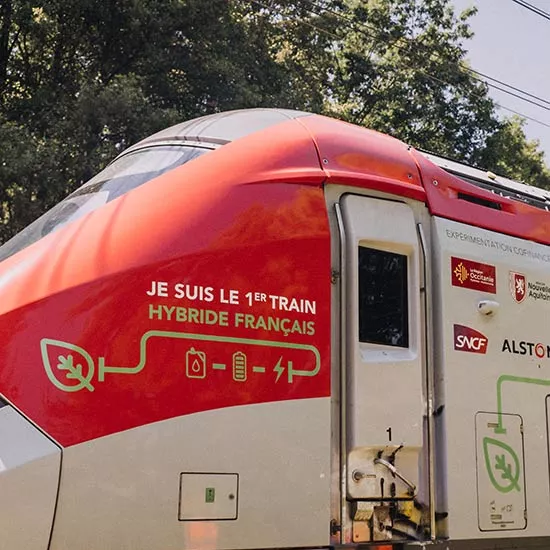
Hybrid TERs
In December 2023, a battery-powered TER departing from Toulouse carried passengers on non-electrified track—a first for France. Launched by Alstom and SNCF, this hybrid train is cleaner than diesel models and 20% more energy-efficient.
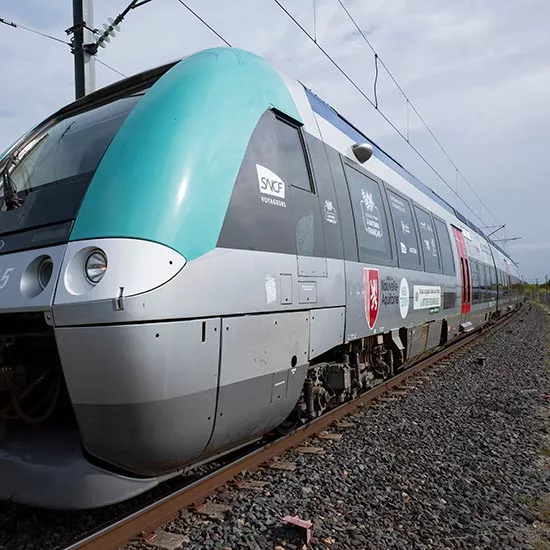
Battery TERs
These dual-mode electric- and battery-powered trainsets are designed for partially electrified lines. We’re testing them in 5 French regions, and they can travel 80 km on non-electrified line.
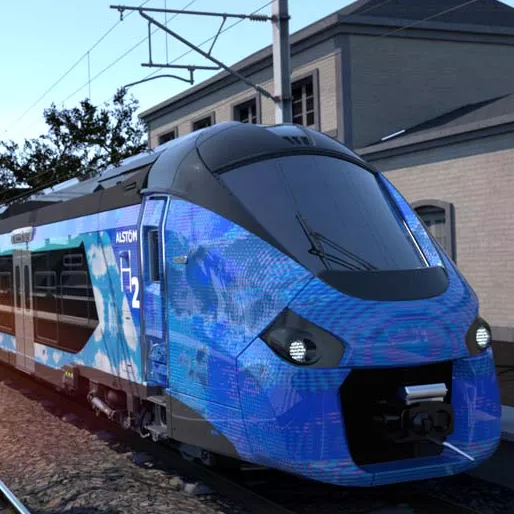
Hydrogen TERs
Alstom is manufacturing 12 hydrogen-powered Régiolis H2 trainsets for 4 pioneering French regions—Burgundy-Franche-Comté, Grand Est, Auvergne Rhône-Alpes and Occitanie. They partnered with SNCF and Alstom to invest a combined total of €231 million.

15
Régiolis trainsets on the Paris–Granville line are powered by biofuel

80 km
Battery-powered TERs can run for 80 km on non-electrified line
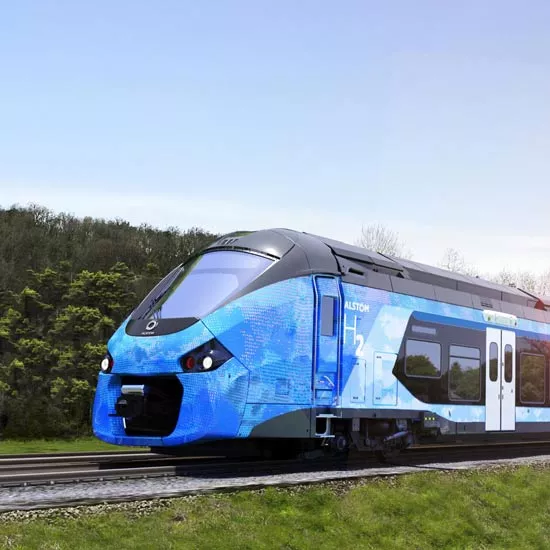
Zero
direct CO2 emissions from hydrogen-powered TERs
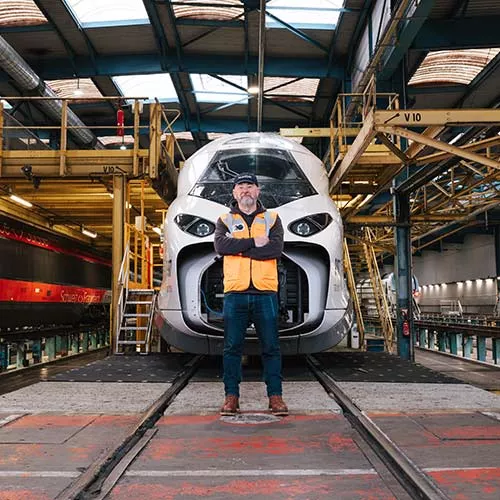
Code name: project TGV M
A 5th-generation TGV is scheduled for commercial roll-out from 2025. Meet the new TGV INOUI, developed under the TGV M project, a high-speed train that takes innovation to a whole new level. It's modular, made in France, more spacious, more energy-efficient and 97% recyclable.
We look back at milestones in our partnership with Altom, the driving force behind this ambitious new chapter in rail travel.

740
passengers at maximum capacity, up from 600 today

20%
less energy consumption, thanks to a new power system and more aerodynamic design
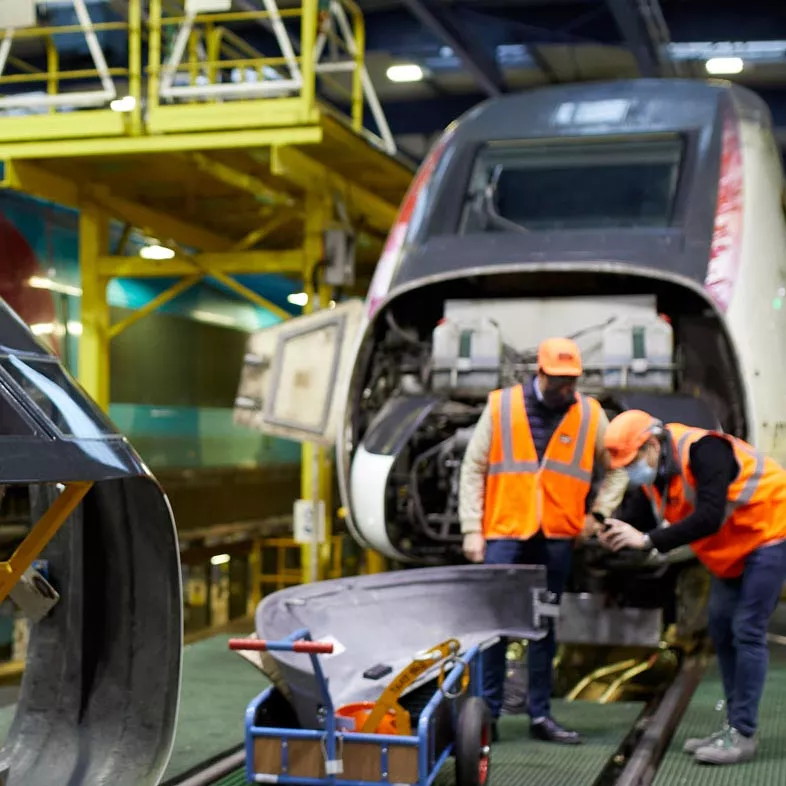
97%
of the TGV M’s materials are recyclable